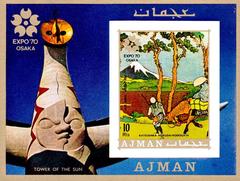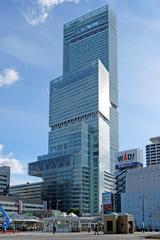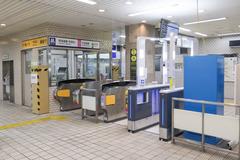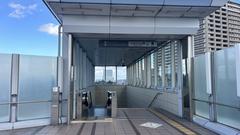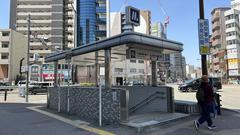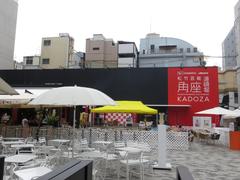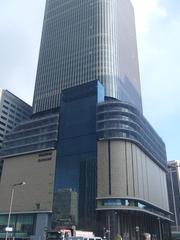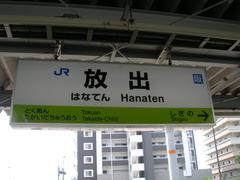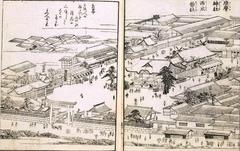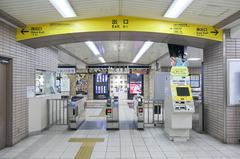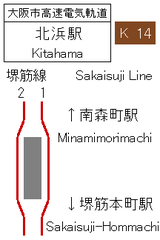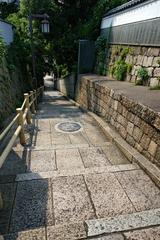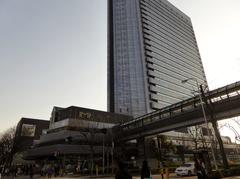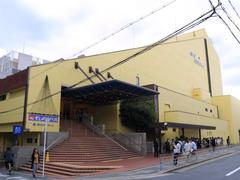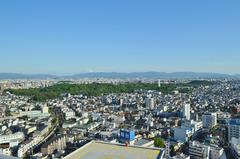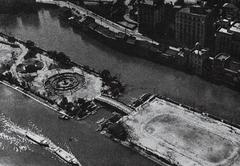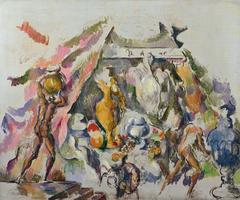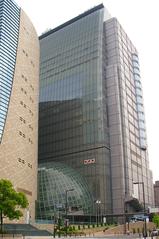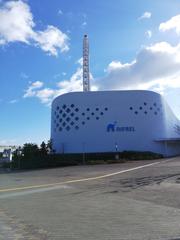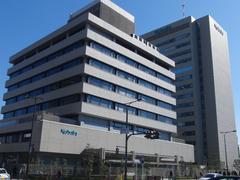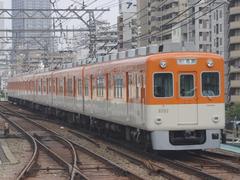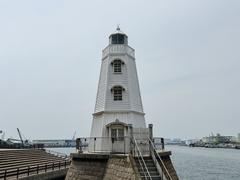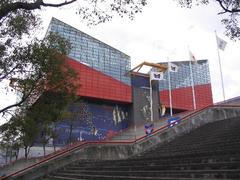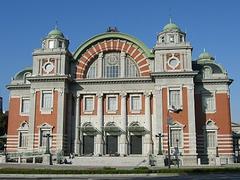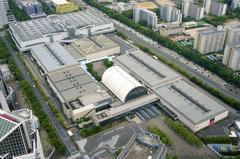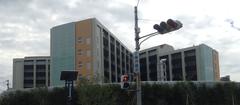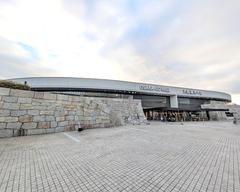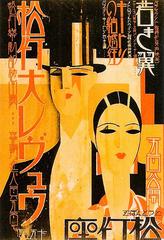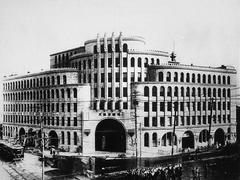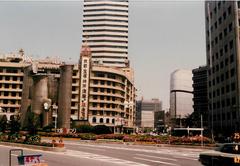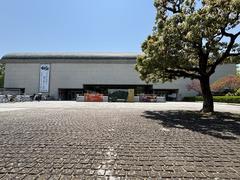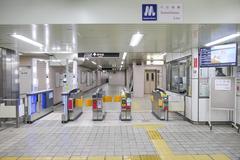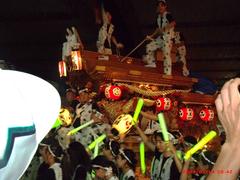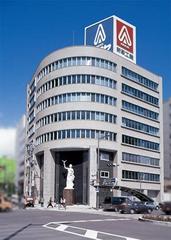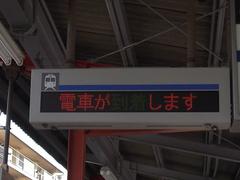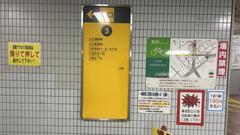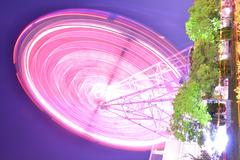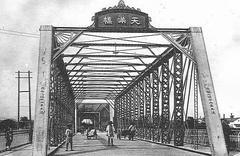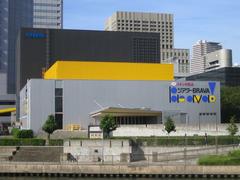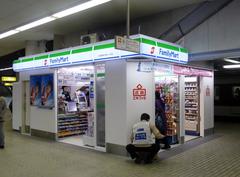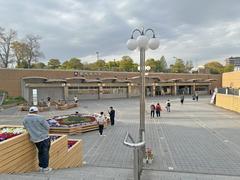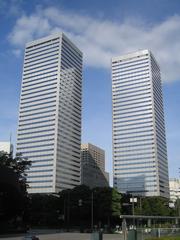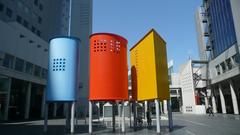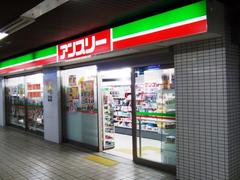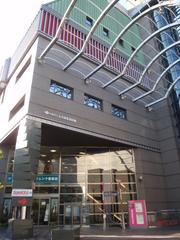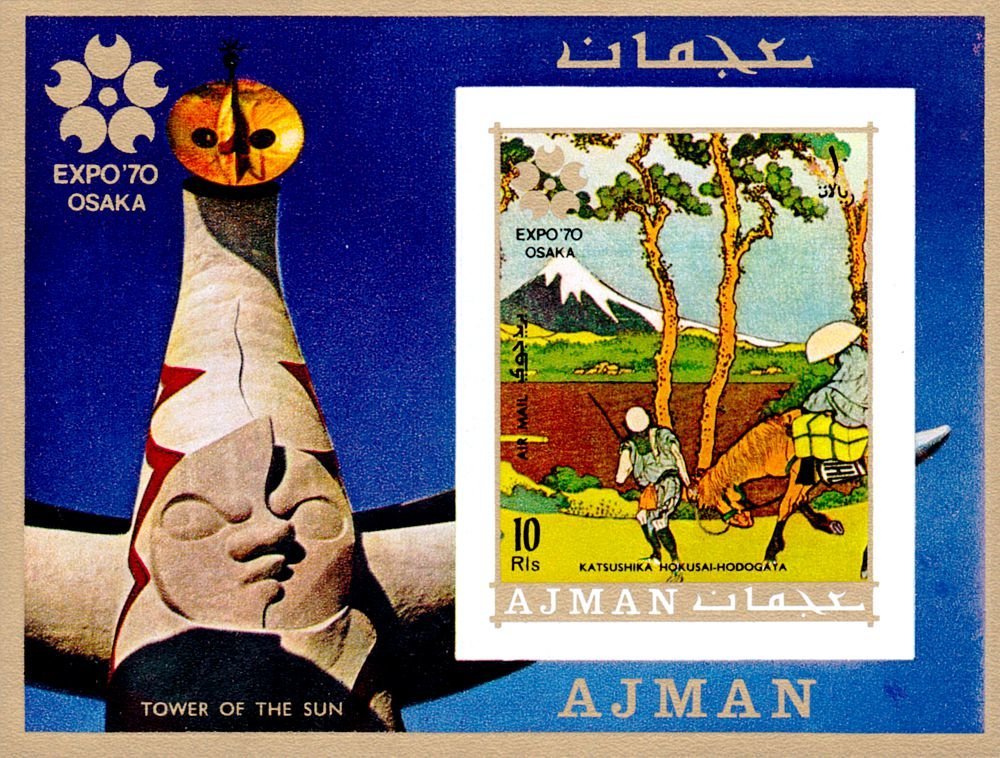
Comprehensive Guide to Visiting Tower of the Sun, Osaka-shi, Japan
Date: 18/07/2024
Introduction
The Tower of the Sun (太陽の塔, Taiyō no Tō), located in the Expo ‘70 Commemorative Park in Suita, Osaka, Japan, is a remarkable and iconic monument. Designed by the avant-garde artist Tarō Okamoto for Expo ‘70, the first World’s Fair held in Japan, this towering structure has captivated visitors with its profound symbolism and unique design since its unveiling in 1970 (Expo ‘70 Official Site).
The Tower of the Sun serves as both a historical landmark and a cultural icon deeply embedded in the Japanese psyche. Its three distinct faces—representing the past, present, and future—embody Okamoto’s vision of the interconnectedness of time and the cyclical nature of human existence. Standing at 70 meters tall, the tower’s design and its intricate interior exhibit, the ‘Tree of Life,’ offer an immersive experience that chronicles the evolution of life on Earth (Tarō Okamoto Memorial Museum).
As the centerpiece of Expo ‘70, which attracted over 64 million visitors from around the world, the Tower of the Sun symbolized the theme ‘Progress and Harmony for Mankind’ and showcased Japan’s rapid economic growth and technological advancements (Osaka Info). Despite facing an uncertain future post-exposition, the tower was preserved due to its cultural significance and was designated a tangible cultural property by the Osaka Prefectural Government in 1994. Restoration efforts, including a major renovation completed in 2018, have ensured its continued prominence as a beloved landmark (Japan Times).
Table of Contents
- [History of 太陽の塔 (Tower of the Sun), Osaka-shi, Japan](#history-of-太陽の塔-tower-of-the-sun-osaka-shi-japanhistory-of-太陽の塔-tower-of-the-sun-osaka-shi-japan)
- [Origins and Conceptualization](#origins-and-conceptualizationorigins-and-conceptualization)
- [Design and Symbolism](#design-and-symbolismdesign-and-symbolism)
- [Construction and Technical Details](#construction-and-technical-detailsconstruction-and-technical-details)
- [Expo ‘70 and Cultural Impact](#expo-70-and-cultural-impactexpo-70-and-cultural-impact)
- [Post-Expo Preservation and Restoration](#post-expo-preservation-and-restorationpost-expo-preservation-and-restoration)
- [Modern-Day Significance](#modern-day-significancemodern-day-significance)
- [Influence on Contemporary Art and Architecture](#influence-on-contemporary-art-and-architectureinfluence-on-contemporary-art-and-architecture)
- [Visitor Experience and Tips](#visitor-experience-and-tipsvisitor-experience-and-tips)
- [Practical Information for Visitors](#practical-information-for-visitorspractical-information-for-visitors)
- [Frequently Asked Questions (FAQ)](#frequently-asked-questions-faqfrequently-asked-questions-faq)
- [Tips for a Memorable Visit](#tips-for-a-memorable-visittips-for-a-memorable-visit)
- [Best Time to Visit](#best-time-to-visitbest-time-to-visit)
- [Guided Tours](#guided-toursguided-tours)
- [Photography Tips](#photography-tipsphotography-tips)
- [Nearby Attractions](#nearby-attractionsnearby-attractions)
- [Accessibility](#accessibilityaccessibility)
- [Conclusion](#conclusionconclusion)
- [References](#referencesreferences)
History of 太陽の塔 (Tower of the Sun), Osaka-shi, Japan
Origins and Conceptualization
The Tower of the Sun was designed by the renowned Japanese artist Tarō Okamoto for the Expo ‘70, the first World’s Fair held in Japan. The Expo ‘70, officially known as the Japan World Exposition, took place from March 15 to September 13, 1970, and was a significant event that showcased Japan’s post-war recovery and technological advancements (Expo ‘70 Official Site).
Design and Symbolism
Tarō Okamoto’s design for the Tower of the Sun was deeply rooted in his avant-garde artistic philosophy. The tower stands at 70 meters tall and features three distinct faces, each representing different aspects of time: the “Golden Mask” at the top symbolizes the future, the “Face of the Sun” on the front represents the present, and the “Black Sun” on the back signifies the past. This tripartite symbolism reflects Okamoto’s belief in the interconnectedness of time and the cyclical nature of human existence (Tarō Okamoto Memorial Museum).
Construction and Technical Details
The construction of the Tower of the Sun was a monumental engineering feat. The structure is made of reinforced concrete and steel, ensuring its durability and stability. The interior of the tower originally housed an exhibit called the “Tree of Life,” which depicted the evolution of life on Earth through a series of intricate sculptures and dioramas. This exhibit was designed to complement the tower’s external symbolism and provide visitors with an immersive educational experience (Osaka Info).
Expo ‘70 and Cultural Impact
The Tower of the Sun was the centerpiece of Expo ‘70, which attracted over 64 million visitors from around the world. The exposition featured pavilions from 77 countries and numerous corporations, showcasing cutting-edge technology, cultural exhibits, and futuristic concepts. The tower’s unique design and profound symbolism made it a focal point of the exposition, leaving a lasting impression on visitors and solidifying its status as a cultural icon (Expo ‘70 Official Report).
Post-Expo Preservation and Restoration
After the conclusion of Expo ‘70, the Tower of the Sun faced an uncertain future. However, due to its cultural significance and public demand, efforts were made to preserve the structure. In 1994, the tower was designated as a tangible cultural property by the Osaka Prefectural Government. Subsequent restoration projects have ensured its continued preservation, including a major renovation completed in 2018, which restored the interior “Tree of Life” exhibit and improved structural integrity (Japan Times).
Modern-Day Significance
Today, the Tower of the Sun remains a symbol of Osaka and a testament to Japan’s post-war resurgence. It attracts thousands of visitors annually, who come to admire its unique design and explore its historical and cultural significance. The tower is also a popular subject in Japanese pop culture, appearing in various films, television shows, and literature, further cementing its status as an enduring icon (Osaka Convention & Tourism Bureau).
Influence on Contemporary Art and Architecture
The Tower of the Sun has had a profound influence on contemporary art and architecture in Japan and beyond. Tarō Okamoto’s bold and unconventional design has inspired a new generation of artists and architects to push the boundaries of creativity and explore new forms of expression. The tower’s emphasis on symbolism and its integration of art and technology continue to resonate with modern audiences, making it a timeless masterpiece (Tarō Okamoto Memorial Museum).
Visitor Experience and Tips
Practical Information for Visitors
- Opening Hours: The Tower of the Sun is generally open from 10:00 AM to 5:00 PM, but hours may vary. Check the official website for current timings.
- Ticket Prices: Admission fees are approximately ¥700 for adults and ¥300 for children. Special rates may apply for groups or during events.
- Accessibility: The park and tower are wheelchair accessible, with ramps and elevators available for ease of movement.
- Guided Tours: Available in both Japanese and English, offering detailed insights into the history and symbolism of the tower.
- Photographic Spots: Designated areas for capturing the best views of the tower.
Frequently Asked Questions (FAQ)
- What are the opening hours of the Tower of the Sun?
The tower is typically open from 10:00 AM to 5:00 PM. Always check the official website for updated timings. - How much are tickets for the Tower of the Sun?
Ticket prices are around ¥700 for adults and ¥300 for children. Group discounts and special rates may be available. - Is the Tower of the Sun wheelchair accessible?
Yes, the Tower of the Sun and the Expo ‘70 Commemorative Park are wheelchair accessible.
Tips for a Memorable Visit
Best Time to Visit
The best time to visit the Tower of the Sun is during the spring (March to May) or autumn (September to November) when the weather is mild, and the park’s natural beauty is at its peak. The cherry blossoms in spring and the vibrant foliage in autumn provide a stunning backdrop for the tower.
Guided Tours
For a more in-depth understanding of the Tower of the Sun, consider joining a guided tour. These tours are available in both Japanese and English and provide valuable insights into the tower’s history, design, and cultural significance. Information on guided tours can be found on the park’s official website.
Photography Tips
The Tower of the Sun is a popular subject for photography, and there are several vantage points within the park that offer excellent views of the structure. Early morning or late afternoon light provides the best conditions for capturing the tower’s unique features. Drones are not permitted in the park, so visitors should plan their photography accordingly.
Nearby Attractions
While visiting the Tower of the Sun, take the time to explore the rest of the Expo ‘70 Commemorative Park. The park features beautiful gardens, museums, and recreational facilities. Notable attractions include the Japanese Garden, the National Museum of Ethnology, and the Natural and Cultural Gardens. Each of these sites offers a unique perspective on Japanese culture and history.
Accessibility
The Expo ‘70 Commemorative Park is wheelchair accessible, and the Tower of the Sun has been equipped with elevators to accommodate visitors with mobility issues. Accessible restrooms and parking spaces are also available. Visitors with special needs are encouraged to contact the park in advance to ensure a smooth and enjoyable experience.
Conclusion
The Tower of the Sun stands as a powerful symbol of Japan’s cultural heritage and artistic innovation. Its rich history, profound symbolism, and enduring influence make it a must-visit destination for anyone interested in Japanese art, history, and architecture. Whether you are a first-time visitor or a returning admirer, the Tower of the Sun offers a unique and unforgettable experience that captures the spirit of Expo ‘70 and the visionary genius of Tarō Okamoto.
Visitors can explore not only the tower itself but also the surrounding Expo ‘70 Commemorative Park, which features beautiful gardens, museums, and recreational facilities. The park’s accessibility and the availability of guided tours and audio guides ensure that all visitors can fully appreciate the cultural and historical significance of this iconic structure (Expo ‘70 Commemorative Park).
As you plan your visit, remember to check the official website for the latest information on opening hours, ticket prices, and special events. By following the tips and guidelines provided, you can ensure a memorable and enriching experience at one of Osaka’s most beloved landmarks. For more insights and updates, don’t forget to download the official Expo ‘70 Park mobile app and follow us on social media.
